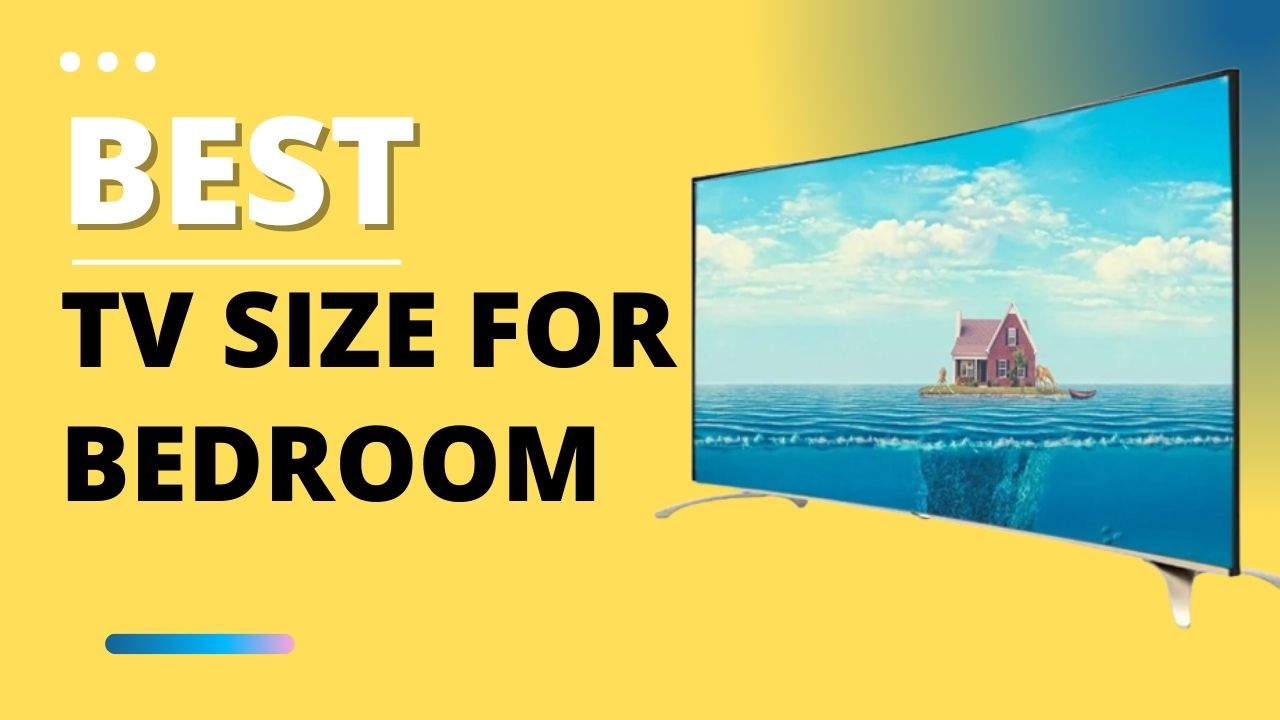Choosing the right TV size for your bedroom can be a tricky task. With so many options available in the market, it’s easy to get overwhelmed and end up buying a TV that’s too big or too small for your room. A TV that’s too small can strain your eyes, while a TV that’s too big can overpower your bedroom and make it look cluttered. In this article, we’ll guide you through the process of finding the perfect TV size for your bedroom, so you can enjoy your favorite shows and movies in comfort and style.
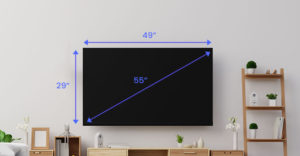
What is the Best TV size for Bedroom?
The ideal TV size for a bedroom depends on the size of the room and the distance between the bed and the TV. Generally, a 32 to 40-inch TV is a good choice for a small to medium-sized bedroom. However, if you have a larger bedroom or plan to mount the TV on the opposite wall from the bed, you may want to consider a larger size.
Choosing the Correct TV Size for Bedroom: Important Considerations
1. Measure your bedroom
The first step in finding the right TV size for your bedroom is to measure your room. Take note of the height, width, and depth of the area where you plan to place your TV. This will give you an idea of how much space you have to work with and help you narrow down your options.
2. Consider the viewing distance
The viewing distance is the distance between your TV and your seating area. It’s an important factor to consider when choosing a TV size, as it can affect your viewing experience. The ideal viewing distance depends on the size of your TV and the resolution of your content. As a general rule of thumb, you should aim for a viewing distance that’s between 1.5 and 2.5 times the diagonal screen size of your TV.
3. Choose the right screen size
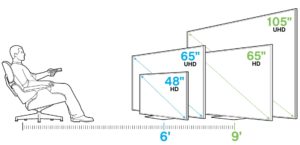
Once you have an idea of your viewing distance, you can start looking for a TV size that fits your room and viewing needs. As a guideline, a 32-inch TV is suitable for a small bedroom, while a 40-inch TV is ideal for a medium-sized bedroom. If you have a larger room or prefer a more immersive viewing experience, you can consider a 50-inch or 55-inch TV.
4. Consider the TV’s resolution
The resolution of your TV can also affect your viewing experience. A higher resolution can provide sharper and clearer images, but it can also be more expensive. If you plan to use your TV for gaming or watching high-quality content, you may want to consider a 4K TV. However, if you’re on a budget, a 1080p TV can also provide a good viewing experience.
5. Choose the right mounting option
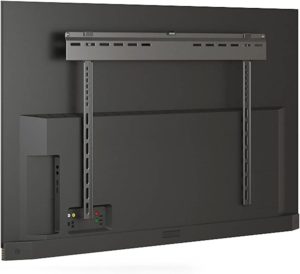
The mounting option you choose can also affect the overall look and feel of your bedroom. If you have limited space, a wall-mounted TV can be a good option as it can save floor space and provide a clean and streamlined look. However, if you prefer a more traditional look, a TV stand can be a good choice.
6. Finalize your decision
Once you’ve considered all these factors, you can finalize your decision and choose the TV that’s right for you. Remember to check the dimensions and weight of the TV before making your purchase to ensure that it fits your space and can be mounted safely and securely.
Guide to Best Size TV for Bedroom
|
Bedroom Size |
Recommended TV Size |
|
Up to 32 sq ft (e.g. 4’x8′) |
24-32 inch TV |
|
Up to 64 sq ft (e.g. 8’x8′) |
32-43 inch TV |
|
Up to 100 sq ft (e.g. 10’x10′) |
43-49 inch TV |
|
Up to 144 sq ft (e.g. 12’x12′) |
49-55 inch TV |
|
Up to 196 sq ft (e.g. 14’x14′) |
55-65 inch TV |
|
Up to 256 sq ft (e.g. 16’x16′) |
65-75 inch TV |
It’s important to note that this is just a general guide and other factors such as personal preference, viewing distance, and room layout may also impact your decision on the right TV size for your bedroom. However, using this guide can provide a good starting point in choosing the ideal TV size for Bedroom space.
How to Measure Your TV Size?
- Find a measuring tape or ruler: The first step is to find a measuring tape or ruler that you can use to measure your TV. Make sure that the measuring tool is long enough to measure the diagonal length of your TV screen.
- Locate the bottom-left corner of your TV screen: Look at the bottom-left corner of your TV screen and find the exact point where the screen begins.
- Locate the top-right corner of your TV screen: Look at the top-right corner of your TV screen and find the exact point where the screen ends.
- Measure the distance between the two points: Use your measuring tape or ruler to measure the distance between the bottom-left corner and the top-right corner of your TV screen. Make sure that the measuring tool is placed in a straight line between the two points to ensure an accurate measurement.
- Record the measurement: Once you have measured the distance between the two points, record the measurement in inches or centimeters. This measurement is known as the diagonal measurement of your TV screen.
- Use the measurement to determine the right TV size: Now that you have the diagonal measurement of your TV screen, you can use it to determine the right TV size for your bedroom. Refer to our TV size for bedroom guide in the previous section to choose the ideal TV size for your room based on the measurement you have taken.
What Size TV For Bedrooms?
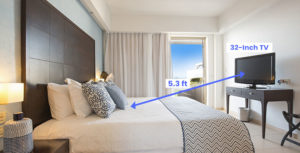
Determining the best TV size for you depends on several factors, such as the size of your room, viewing distance, and personal preference. Here is a detailed guide to help you choose the best TV size for your needs based on different TV sizes:
1. Small TV:
A small TV is typically defined as a screen size between 32 and 40 inches. Small TVs are ideal for small rooms such as bedrooms, kitchens, or small apartments. This TV is also easily converted to use a tv as a computer monitor. If you have a small room, a small TV is a great choice as it won’t overwhelm the space. Additionally, a small TV is typically more affordable than larger screens, making it a budget-friendly option.
2. Medium-sized TV:
A medium-sized TV is typically defined as a screen size between 40 and 55 inches. This size is great for average-sized rooms such as living rooms, family rooms, or home theaters. If you have a medium-sized room, a medium-sized TV is a great choice as it will provide a large enough screen for an immersive viewing experience without taking up too much space.
3. Large TV:
A large TV is typically defined as a screen size between 55 and 70 inches. Large TVs are great for big rooms such as large living rooms or home theaters. If you have a large room, a large TV is a great choice as it will provide a truly immersive viewing experience. Additionally, a large TV also serves you as the best gaming TV, not just limited to games, but you can watch movies and sports content with friends and family as well.
4. Extra-large TV:
An extra-large TV is typically defined as a screen size larger than 70 inches. These screens are great for home theaters or large living rooms with plenty of space. If you have an extra-large room, an extra-large TV is a great choice as it will provide a truly cinematic viewing experience. However, it’s important to note that an extra-large TV can be quite expensive and may not be necessary for everyone.
Conclusion
In conclusion, choosing the right TV size for bedroom requires careful consideration of your room’s size, your viewing distance, and your viewing needs. By following these tips, you can find a TV that fits your bedroom perfectly and provides a comfortable and enjoyable viewing experience.
Frequently Asked Questions (FAQs)
Q.1 How many watts does a tv use per hour?
The number of watts a TV uses per hour varies based on the TV’s size, make, and model. Generally, smaller TVs consume less energy than larger ones. Most of the peoples have ask a query that how many watts does a tv use and they are confused to this Query. So, On average, a TV uses around 80 watts per hour, which translates to 0.08 kWh. However, this number can be much higher for large screens or for TVs that are used for extended periods. To get a more accurate estimate of your TV’s energy usage, check the label or user manual for the wattage, or use a wattmeter to measure it yourself.
Q.2 How far should the TV be from the bed in a bedroom?
The ideal viewing distance for a TV in a bedroom is typically 6 to 8 feet. However, this may vary depending on the size of the TV and the resolution of the screen. As a general rule, you want to be close enough to see the details on the screen without having to strain your eyes, but not so close that the picture becomes pixelated.
Q.3 Can I mount a large TV in a small bedroom?
While it’s technically possible to mount a large TV in a small bedroom, it may not be the best choice. A large TV can overwhelm a small room, making it feel cramped and uncomfortable. Additionally, if you’re sitting too close to a large screen, you may start to see individual pixels or experience eye strain.
